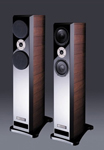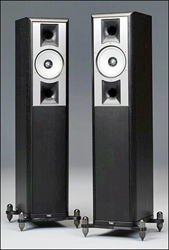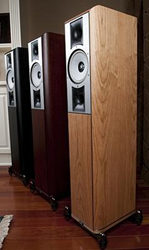Introduction
The late Jim Thiel and company have been making speakers in the heartland of Kentucky for over 30 years. THIEL has amassed a staggering 55 accolades from international press, including the high performance audio industry’s most prestigious publications. The SCS4T is part of the J.E.T. series and offers the most affordable line of speakers that THIEL currently manufactures. The SCS4Ts are a compact tower design that uses the “coherent source” driver configuration that is found in the SCS4 bookshelf units. These small, versatile speakers are designed to give great sound for music or movie soundtracks alike. After about 80 hours of breaking them in, I settled back to see if they could live up to the “THIEL sound heritage” established by their bigger brother, the CS3.7 towers.
Specifications
- Design: Floor-standing, 2-way, Ported
- Drivers: One 1″ Metal Dome Tweeter, One 6.5″ Woofer, Coaxial Mount
- MFR: 48 Hz – 20 kHz ± 2 dB
- Sensitivity: 87 dB/2.8V/M (Anechoic)
- Nominal Impedance: 4 Ohms
- Power Handling: 200 Watts
- Dimensions: 40.5″ H x 8.4″ W x 11.7″ D
- Weight: 50 Pounds/each
- MSRP: $ 3,690/pair USA
- THIEL
Design and Setup
The SCS4T use a very low distortion, high output, metal diaphragm 6.5-inch woofer that is coaxially mounted with a 1-inch, metal dome tweeter. This is the same high performance tweeter that is used in Thiel’s flagship model CS3.7. The woofer’s short coil/long gap, copper stabilized motor system is designed to reduce distortion, and the metal diaphragm is specially shaped to reduce diffraction of the tweeter’s energy.
In addition, this type of coaxial driver mounting allows greater placement flexibility by ensuring that every listener hears the sound from both drivers at exactly the same time, regardless of what orientation the speakers are placed (see diagram). I am a big fan of coaxial drivers, mainly because of the superior imaging properties and simpler crossover configuration. The crossover for the SCS4T is a true first order acoustic type that provides very good spatial and depth imaging performance, as well as overall realism. This type of crossover provides better accuracy of amplitude, phase, time, and energy, and prevents distorting the musical waveform. I have recently reviewed this design in speakers from Pioneer and Kef and was consistently impressed by the wide soundstage this coaxial design was able to cast.
Aesthetically, the SCS4Ts are slim both in width and depth and look beautiful with or without the grilles. Each speaker has an outrigger designed to provide stability and lift the tower off of the floor. The outriggers are infinitely adjustable, so getting each one perfectly level (on my not-so-level floor) was a snap. Once adjusted, they can be tightened down to prevent loosening or rattling.
I liked the look of them without the grille, so all of my listening was done in that fashion. The grilles were metal and I usually don’t find them to be as acoustically transparent as a cloth grille. Your mileage may vary, of course, but I did my reviewing with them off.
The finishes come in black, dark cherry and natural cherry. The towers look exactly the same as the SCS4 bookshelf speakers, but for that new extended cabinet, which has been sealed from the rest of the speaker. That base has been well-braced to prevent cabinet resonances. The five way binding posts can be hand tightened or a wrench can be put on them for the ultimate “death grip”. The front aluminum face plate provides a distinguished look, with ports located directly above and below the drivers. The centers of the drivers are approximately at ear height. For my listening tastes, I toed the speakers in ever so slightly and achieved good results. To assist in the toe in procedure, I set the speaker spikes on a tile rather than let them sink into my carpet and be locked into place. To prevent my tiles from getting etched, I put coins under the spikes.
This is a good trick if you are planning on placing these on a wooden floor, too. I was asked to give the speakers about 100 hours for break-in. I’m not sure I am a full believer of mechanical break-in, but most of my comments will be about the performance after about 80 hours. (Hey, I have to eat and sleep sometime and 100 hours is a lot of time!).
In Use
I’ll tell you now that I obviously played these speakers with the rest of my Revel Concerta system. This way I could evaluate them with movies and multi-channel music. With both contents, they sounded wonderfully. The speakers played loud without distortion and would do a home theater proud. But since I got them as a pair, most of my evaluations will be about their stereo reproduction. As fate would have it, I am also reviewing a high-end CD player and an outboard two channel DAC unit at the same time as these, so listening to “stereo only” just happened to be on the menu for the next few weeks anyway. Comparing them to my F12s, the SCS4Ts had a broader soundstage, though not quit as deep. They also did not have the deep bass extension as the dual 8 inch woofers of the Revels, but the Thiels could still play low. The bass was tighter in definition yet not quite as rich as the F12s. I also felt at first, that the midrange was a bit hollower when I first fired them up, but the sound seemed to opened up beautifully over extended listening (whether mechanical break-in or my ears simply got used to them, I do not know).
In any case, the SCS4Ts provide a satisfyingly full audio spectrum and great detail. Treble was both smooth and natural. Voices were well reproduced and a bit more forward projection into the room than I was accustomed to hearing. After a while, I actually liked their forwardness, especially with voice and small ensemble music. The SCS4Ts proved easy to drive with my 125 watt/channel amplifier.
The Glory of Gabrieli is a wonderful set of pieces for 3 choirs, organ, instrumental ensemble and antiphonal brass. Recorded in the venue for which it was written, San Marco in Venice, the dual boys choirs are spaced left and right with a 40 foot span between them and an all male choir directly in front of the listener. Antiphonal music is a great way to evaluate the imaging characteristics of a speaker pair and the Thiels did not disappoint.
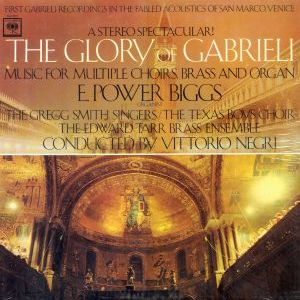
The sense of space was well presented as one choir off to the right was answered with the choir from the far left. The brass choir launched salvos back and forth with wonderful precision and had that glorious ringing sound that brass makes when played in an open, acoustically large space. The ensemble in the middle was solid, stable and place smack dab between the two speakers. Instruments sounded natural and the reverberation of San Marco was well conveyed by the SCS4Ts. All in all, the width and depth of the soundstage cast by the Thiels was very good, even if you were not seated in the best seat in the house.
James Taylor’s Greatest Hits provided me with acoustic/electric instruments as well as the golden voice of “Sweet Baby James”. The SCS4Ts gave a slightly forward presentation of the vocals with the band playing around JT’s voice in most of the musical numbers. His voice, which is smooth and mellow, sounded natural and clear and again, a bit up front. His voice is perfect for listening for mid-range colorations. Instruments on some quieter pieces sounded good with their natural timbre and details presented faithfully. There was no hint of over sibilance.
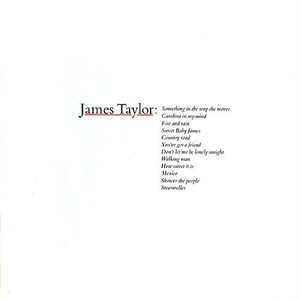
You could hear the fingers slide across the strings of the guitar and that snap of the drumstick on a stretched skin. I turned this one way up and never felt the SCS4Ts were being unduly strained.
Time Out: is a jazz classic in every sense of the word. Although this mix is for SACD, it was reviewed in stereo. The soundstage and interplay of the musicians was well interpolated with the Thiels. It was around this time of listening that I realized how good the bass sounded with these speakers.
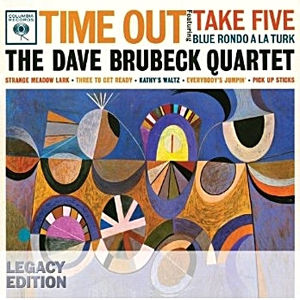
Generally a co-axial design will present a trade-off of deep bass for the increase in mid and treble response (and of course, imaging), but the SCS4Ts had a very satisfying bass response. Kick drum was not over produced, but sounded natural and in keeping with the rest of the ensemble playing. The band felt spread out and not bunched up. Poorer speakers have a tendency to make the bass player sound like he could also be playing the drum set…simultaneously. Not so with the Thiels. There was a sense of space between each player, not only side by side, but front to back as well. Nothing sounded bunched together. Bass was natural and tight without over emphasis. You could add a sub to the Thiels, but if you like to listen in pure two channel, these speakers should more than satisfy your desire for full music reproduction.
Tomita: The Planets: This disc is a realization of a great classical orchestral work by Gustav Holst, which has been transcribed to synthesizer by Isao Tomita. The 3D effects on this disc are amazing with headphones and only speakers with exceptional imaging and stereo separation can reproduce that 3D effect from your listening spot.
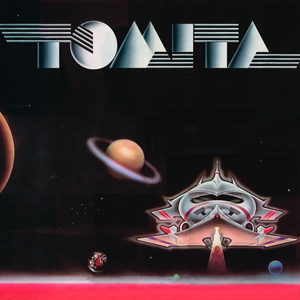
The SCS4Ts easily produced that effect and when you close you eyes and listen, the music swirls around you and transports you across the solar system. Sounds were not only panned left to right, but often crossed over between your ears. Other sounds were clearly being projected behind my head. Talk about experiencing the music! More than once I had to get up and make sure the rear speakers were not engaged. Again, this exceptional imaging is a hallmark of the “coherent source” driver configuration. It may seem strange, but this album was one of the ones that got me hooked on “longhair” music back in my college days. Thank you, Mr. Tomita!
Conclusions
As far as I could hear, Thiel has designed a fine speaker with the SCS4Ts. They have capitalized on the design of the SCS4 by making a good bookshelf speaker into a slick tower design and adding finely tuned bass. Imaging is superb and the overall sonic projection is slightly forward with plenty of kick in the low end. True, these towers will work well in a home theater set-up, but I feel they are really at their finest when it comes to music reproduction. If you get a chance, give these a listen and hear for yourself how much good sound your money can buy.


